#Richard Koons
Explore tagged Tumblr posts
Note
🤔,👻,💥, and 🛏 for the ask game!
Thanks for the asks! ❤️
🤔 Are there any new characters you want to write about?
I'm actually super excited about this! I just found out about the Febuwhump event, and one of the prompts is perfect for some new characters I've loved for a while but never written about. I'm a HUGE fan of the Pendergast series by Douglas Preston and Lincoln Child (my next cats will be named Vinnie and Aloysius) and have been thinking of writing a short fic about D'Agosta's reaction to Pendergast's sacrifice in Book 5: Brimstone. That will be posted in February but I'm already working on it so I can have time to get it as close to perfect as possible!
Another new kind of fic I might try to write is for C.J. Archer's Cleopatra Fox series, because as much as I love her slow-burn, low-spice detective stories, we are in book 9 (NINE) and there has been no real emotional progress and only two brief kisses that Cleo overthinks for the rest of that book and the next. Richard is perfect for her but she just won't admit to her pessimistic (and sometimes toxic-feminist) side that he's not like the guys she's seen in the past. I listen to the series on audio, and during the last book people at work actually thought I was mad at my spreadsheets but I was really just mentally shaking this girl by the shoulders like "Open your eyes, ma'am!" So (deep breath, don't continue the rant)...I would love to attempt a fix-it sort of thing where I finally get the resolution that I want and they go on happily solving crimes together, whether her family disowns her or not. Her family isn't particularly likable to begin with, except for Flossy who is a funny little dear, so I don't see where that's a huge issue.
Summary: If I write a Pendergast fic, I just want him and D'Agosta to acknowledge that at this point they are blood brothers, maybe for Aloysius to fess up a little about why he's so averse to hugs, and for them to admit that they would die for each other since they have each actually tried to like twice already. If I write a Cleo/Richard fic, I just want an honest admission by Cleo that she was wrong about love and that marriage to a man who she fell in love with at first sight who lets her do as she pleases and who "gets" her at a level that her family never could, would maybe not be so bad.
👻 Is there a new genre you'd like to write?
I'd actually like to try my hand at...I guess it's not really romance, because of the simple fact that I don't like what most romance/romantasy novels contain (to each his own, but I'ma pass). But stories like in The Secret of Chimneys by Agatha Christie, in which the guy and the girl actually are perfect for each other and their souls mesh the minute they meet, like "Wow what took me so long to find you?" At the moment that's my Cleo Fox/Richard Armitage HC story, or Tech/Phee and Hunter/Sheona (OC) for the Bad Batch. In the case of the Batch, they all deserve a happily ever after. I'm just not sure how well I could write that kind of thing.
💥Is there a chapter, scene, or WIP you're most excited to write? Share a snippet or tell us about it!
Yes! I'm super excited about writing The Codex, which I've talked about a little already but will happily do so again at length. It's in the very beginning stages but I would love to get it done this year, especially with the TBB comics coming out!
Basic Idea: Near the beginning of the Clone Wars, Clone Force 99 is assigned by Commander Cody to escort Obi-Wan Kenobi to an unexplored Outer Rim planet. Their objective is to find an ancient Sith/Jedi relic that has been coming up in underworld chatter, an object known as the Codex. (It's actually a real thing in SW. The Codex focuses and enhances a being's Force potential but was lost for millennia.) Kenobi hasn't met the Batch before, but as soon as he does he senses something like Force sensitivity in Hunter.
Without prying too much, the general tries to discover what the sergeant's abilities may be as the mission goes on. (Think random questions and conversations regarding Force things about which Hunter has literally no clue. The poor sergeant thinks Cody gave them the crazy general, which he did, but for other reasons.) When they get to the temple, a dark Force user is already there for the relic and a nail-biting race for the artifact ensues through underground tunnels, light sabers and blasters lighting up the dark, like a crazy Preston&Child chase sequence. Lots of opportunities for the young Batch to prove their stuff as relatively new soldiers -- cave-ins and explosions for Wrecker, split-second thinking and obscure knowledge for Tech, and stuff to kill and make fun of for Crosshair. Hunter is dealing with his own issues because of the Force thing but he's also thrilled to be out in the field, tracking and getting the job done. (Another side effect is that Obi-Wan is in real fear for his life at one point, sees these boys causing chaos and destruction, having the time of their lives, and thinks that it should be illegal for that much energy and death-wishiness to be packed into four men. It's enough to supply the entire 7th Sky Corps but somehow they got all of it.)
The plot twist is that Kenobi is emphatically not the hero of the story. The Dark Force user takes the "room temperature challenge" courtesy of an unlikely person who used the Codex and surprised everyone, including himself.
I just think a Force-sensitive Hunter would be a fun character to explore, and I like the idea of the Bad Batch saving General-the-Sithslayer Kenobi. I also think that Obi-Wan would see the four young batchers (scrawny in too-big armor, fresh off Kamino, arguing amongst themselves with intense stray puppy vibes) and just go "Adopt" because he's been around Plo too long and it's turned up his own dad instincts. (If not precious kiddos, why precious kiddo shaped?)
🛏 Is there a new trope you'd like to write this year?
Do AUs count as tropes? Because buddy do I have some stuff I've been thinking about. I love the Modern Batch AU my sister came up with; I also have plenty of ideas for an "Order 66 didn't happen (or if it did it didn't work bc Cody is awesome)" kind of AU. There's another one I've been thinking about, which I've been calling my Rescued AU, that also includes a Force-sensitive Hunter, but the Bad Batchers are much younger than the other clones, Ahsoka is older, Fives lives and Echo is never blown up, and Rex and the command batch figure out who the Sith Lord is early on in the war. Somehow this saves the galaxy and everyone lives happily ever after.
If not AUs, I think the "presumed dead" trope is fun (for me, obviously not the characters). It was done well in Brimstone and I've had a WIP called Glory and Honor that's been collecting dust forever, in which Cody is presumed dead after a terrible campaign that was caused by either Krell or Tarkin (still not sure if it's going to be an Umbara alternate or take place in a more original setting). Kenobi is distraught because he was wounded and taken from the field before Cody disappeared, and has no way to know for sure if the commander was killed instantly as reported or if he was left to die slowly in the carnage. Cody obviously survives and fights his way back to his Jedi and his men, and gets a good swing or two in on the bad guy responsible (which is why I'm kind of hoping it's going to be Krell, so I can have Cody kill him off as he deserves).
If you read ALL of that, I applaud you. I am notoriously long-winded😂Sorry!
#ask game#the bad batch#star wars#not codywan#Cody and kenobi are blood brothers bc they're done with everyone's nonsense#Cody would make the best uncle to Korkie and Satine immediately likes him even though he's a soldier#force-sensitive Hunter#the codex#my wips#clone force 99#modern au#fix it au#deaged au#the bad batch fanfic#tbb crosshair#tbb tech#tbb hunter#tbb wrecker#commander cody#captain rex#command batch#obi wan kenobi#Plo Koon the best dad and Jedi ever#aloysius pendergast#douglas preston is a genius#cleopatra fox#richard armitage#cleo/harry#tech/phee
13 notes
·
View notes
Text

Richard Avedon - Willem de Kooning and Susan Brockman, New York, January 26, 1964
42 notes
·
View notes
Text
100+ Famous Modern Art Artists of All Time

2/8/2024 ♦ Framed Poster Print ♦ Canvas Print ♦ Metal Print ♦ Acrylic Print ♦ Wood Prints 🌐 Worldwide shipping
#Elie Nadelman#damien hirst#jeff koons#andreas gursky#cindy sherman#anselm kiefer#jenny saville#jenny holzer#richard prince#anish kapoor#tracey emin#yoshitomo nara#gerhard richter#marlene dumas#olafur eliasson#barbara kruger#christopher wool#louise bourgeois#mark bradford#peter doig
4 notes
·
View notes
Text


June 11, 2023
Richard Anuszkiewicz + Jeff Koons
Columbus Museum of Art - Columbus OH
1 note
·
View note
Text




Outdoor sculpture exhibits at Glenstone
1 note
·
View note
Text
POSTMODERNISM (WEEK 11)
One example of a postmodern artwork is Jeff Koons' "Balloon Dog." This sculpture consists of a giant metallic balloon animal that is both playful and absurd. It subverts the traditional notion of sculpture as a serious and weighty art form by using a material associated with children's parties and carnival games. At the same time, it references the history of sculpture and the practice of creating figurative works in metal.

Another example of postmodern art is Richard Prince's "Cowboy" series. These paintings are based on Marlboro cigarette advertisements from the 1950s and 60s, but instead of depicting rugged cowboys smoking cigarettes, Prince has removed the text and enlarged the images. This creates a sense of detachment and irony, as the original advertisements were designed to sell a product by appealing to a romanticised version of American masculinity.

Both of these artworks share a common thread of postmodernism, as they challenge traditional forms and conventions in order to create something new and unexpected. They also share a sense of playfulness and humour, as well as an interest in appropriating and subverting existing cultural forms.
Overall, postmodernism in art is a highly complex and diverse movement that encompasses a wide range of styles and approaches. It challenges established norms and conventions, and encourages artists to explore new ideas and ways of thinking about the world.
(223 words)
References:
“Jeff Koons Artwork: Balloon Dog.” Jeff Koons, http://www.jeffkoons.com/artwork/celebration/balloon-dog-0.
“Cowboys.” The Guggenheim Museums and Foundation, https://www.guggenheim.org/teaching-materials/richard-prince-spiritual-america/cowboys.
American, Richard Prince. “Richard Prince: Untitled (Cowboy).” The Metropolitan Museum of Art, 1 Jan. 1989, https://www.metmuseum.org/art/collection/search/283742.
0 notes
Photo

Willem de Kooning, painter, Springs, Long Island, August 18, 1969
Richard Avedon
91 notes
·
View notes
Photo
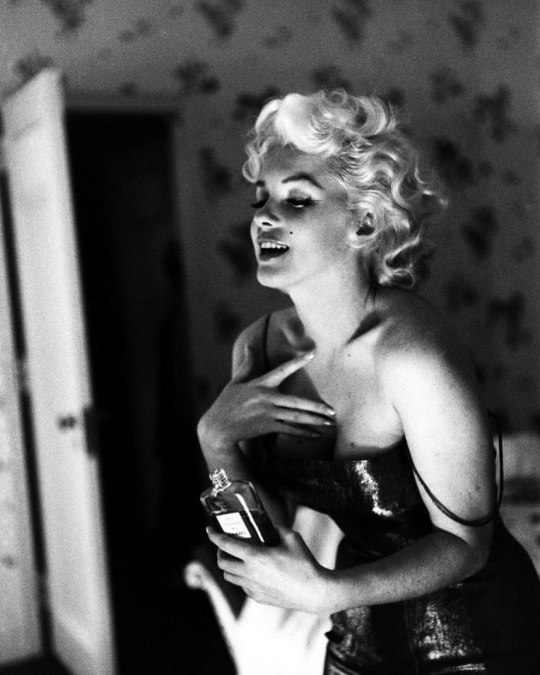
"Marilyn Monroe was baptized by Aimée Semple McPherson, analyzed by Anna Freud, befriended by Carl Sandburg and Edith Sitwell, romanced (if you can call it that) by Jack and Bobby Kennedy, painted by Willem de Kooning, taught acting by Michael Chekhov and Lee Strasberg, photographed by Richard Avedon, Cecil Beaton, and Henri Cartier-Bresson.
She managed—on the strength of limited dramatic talent and within a studio system that paid no attention to individual ambition—to work with some of the greatest directors in movie history: twice with John Huston, Billy Wilder, and Howard Hawks, and once each with George Cukor, Joseph Mankiewicz, and Laurence Olivier.
She was the first Playboy centerfold and one of the first women to own her own production company; she was a nudist and a champion of free love long before these concepts emerged into the national consciousness.
She maintained a deep association with the American military that, all on its own, lent her a mythic stature. When the Second World War broke out, she became both a teenage war bride and an actual Rosie the Riveter (long days spent working in the fuselage-varnishing room of the Radioplane plant in Burbank); her first cheesecake photographs were taken in the spirit of “morale boosters” for the boys overseas; her famous appearance in Korea—wriggling onstage in her purple sequined dress, popping her glorious platinum head out of the hatch of the camouflaged touring tank rolling her to the next appearance—remains the standard against which any American sex symbol sent to entertain the troops is measured.
She was the first celebrity to talk openly about her childhood sexual abuse, a kind of admission that has become so common today that we hardly take notice of it. But to tell reporters in the 1950s that you had been raped as an 8-year-old—and to do so without shame, but rather with a justifiable sense of fury and vengeance—was a breathtaking act of self-assurance."
From "Inventing Marilyn Monroe," by Caitlin Flanagan, in "The Atlantic," March 2013. (Photograph by Ed Feingersh.)
[Follies Of God]
#Marilyn Monroe#Caitlin Flanagan#The Atlantic#Follies of God#Ed Feingersh#articles#words and writing
303 notes
·
View notes
Text
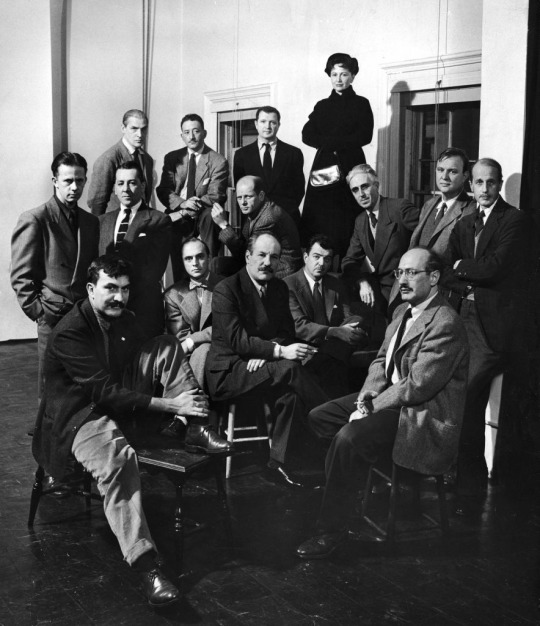
"The Irascibles" The group of artists that led the 1951 fight against the exclusion of abstract expressionism from a New York show included, from left, rear: Willem de Kooning, Adolph Gottlieb, Ad Reinhardt,
Hedda Sterne; (next row) @abwwia
Richard Pousette-Dart, William Baziotes, Jimmy Ernst (with bow tie), Jackson Pollock (in striped jacket), James Brooks, Clyfford Still (leaning on knee), Robert Motherwell, Bradley Walker Tomlin; (in foreground) Theordoros Stamos (on bench), Barnett Newman (on stool), Mark Rothko (with glasses).”
Nina Leen/Life Pictures/Shutterstock | source
Nina Leen (born 1914, died January 1, 1995) was an American photographer born in the Russian Empire. She was a constant contributor to Life. She is remembered above all for her photographs of animals, many published in book form, as well as her portraits. Via Wikipedia
Hedda Sterne (August 4, 1910 – April 8, 2011) was a Romanian-born American artist who was an active member of the New York School of painters. Her work is often associated with Abstract Expressionism and Surrealism. She was also the only woman to appear in the famous photograph of abstract expressionist artists dubbed "The Irascibles", although the group included other women.
Hedda Sterne in her studio source

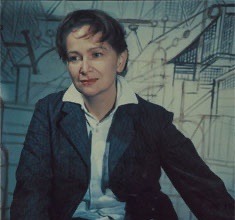
Hedda Sterne, 1947, photograph by Margaret Bourke-White
Margaret Bourke-White (/ˈbɜːrk/; June 14, 1904 – August 27, 1971) was an American photographer and documentary photographer. She was arguably best known as the first foreign photographer permitted to take pictures of Soviet industry under the Soviets' first five-year plan, as the first American female war photojournalist, and for taking the photograph (of the construction of Fort Peck Dam) that became the cover of the first issue of Life magazine. Via Wikipedia
25 notes
·
View notes
Text
Shades of Greige
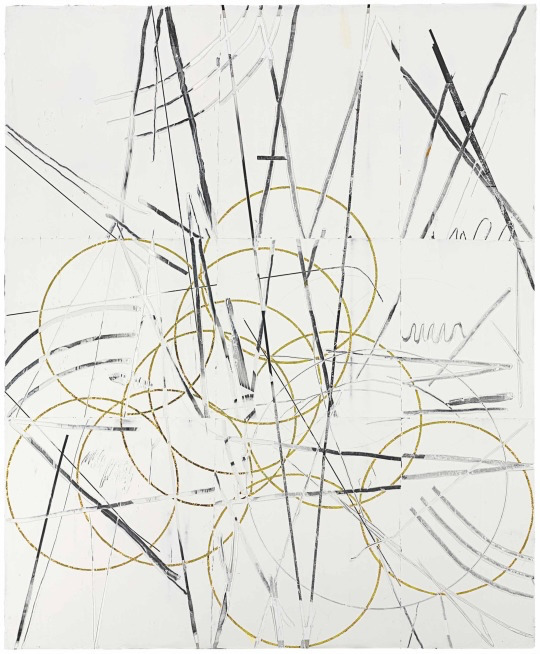
Garth Weiser - Thunder and Light
::
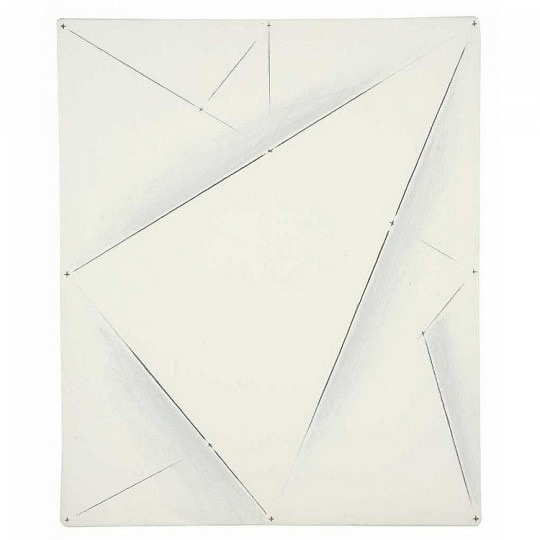
Jiro Takamatsu
::
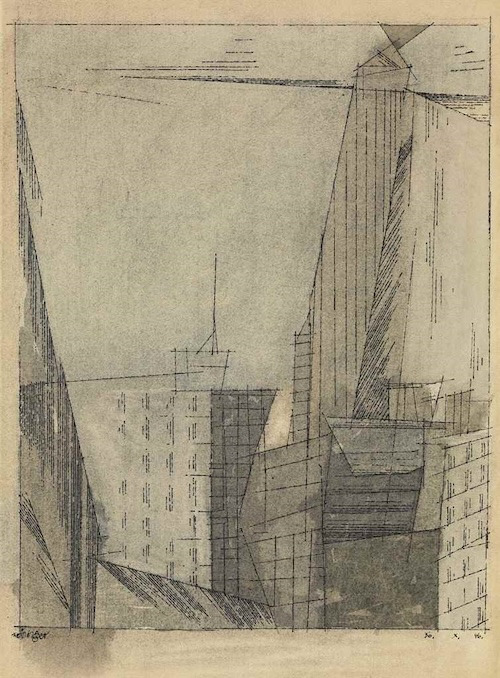
Lyonel Feininger - The Tower
::
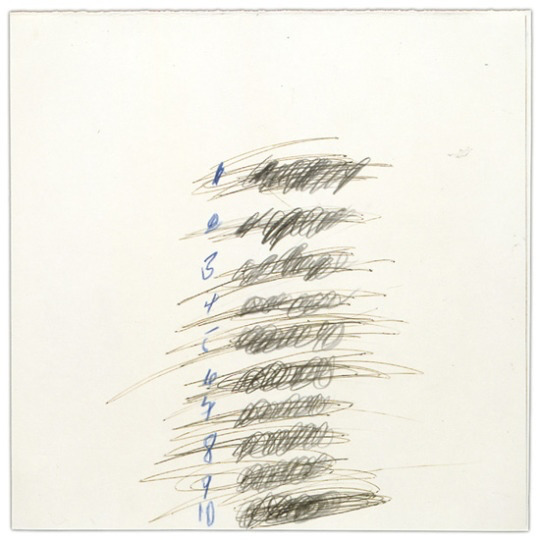
Cy Twombly - Letter of Resignation
::
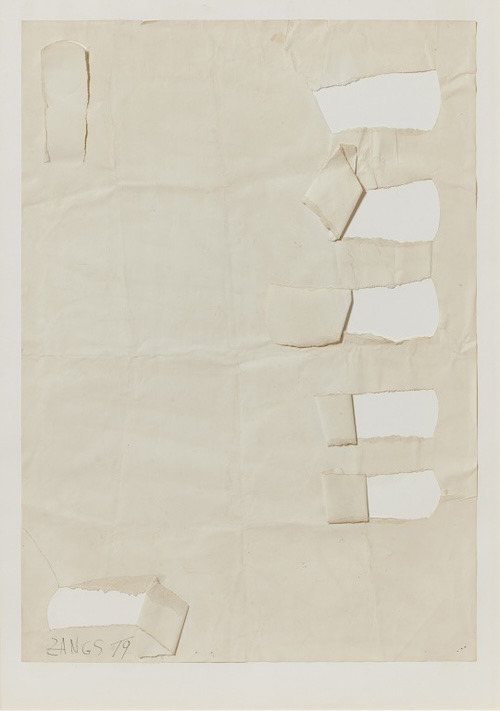
Herbert Zangs
::
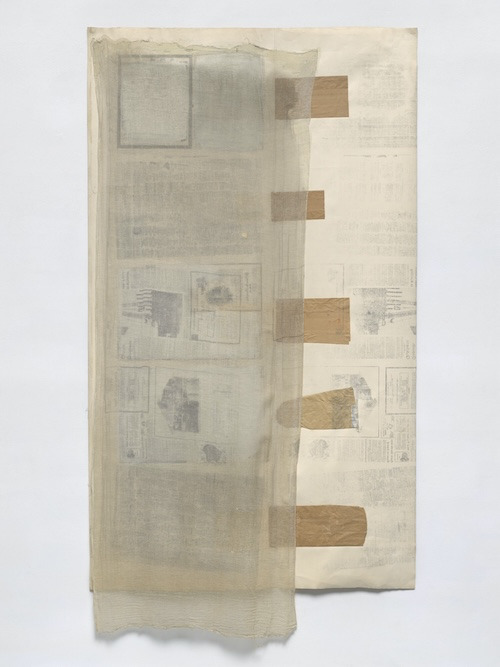
Robert Rauschenberg - Untitled
::
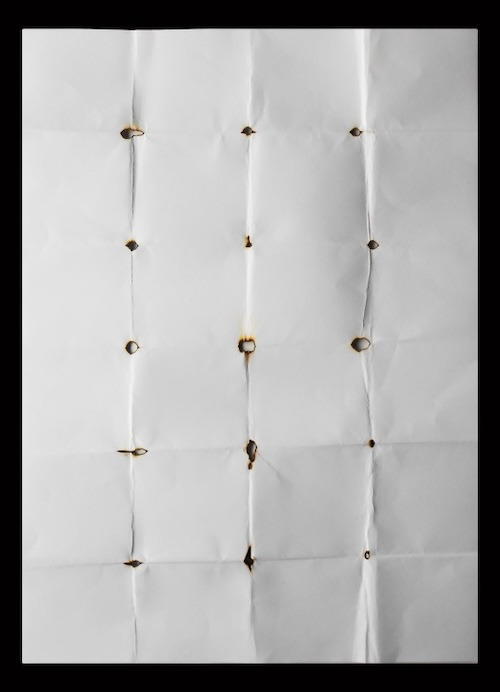
Luciano Caggianello - Conceptual Shroud
::

Dan Walsh - Grid Book
::
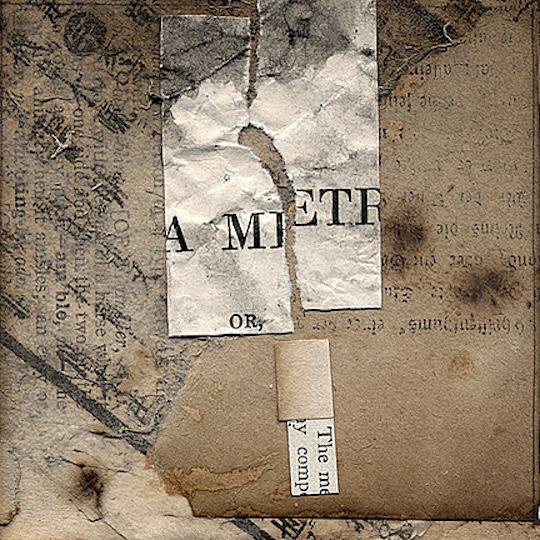
Janet Jones
::

Mirko Baricchi
::

Ellsworth Kelly - Open Window, Hotel de Bourgogne, 1949
::

Joel Shapiro - Untitled, 1977
::
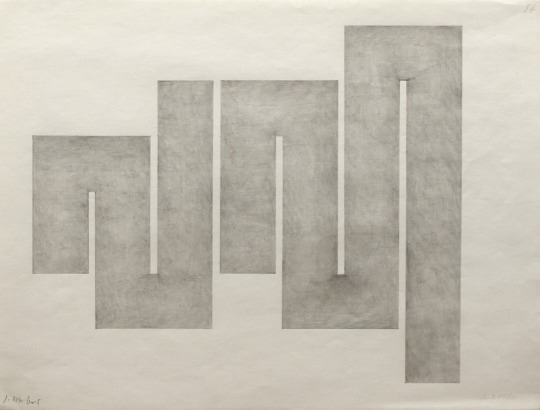
Julije Knifer
::
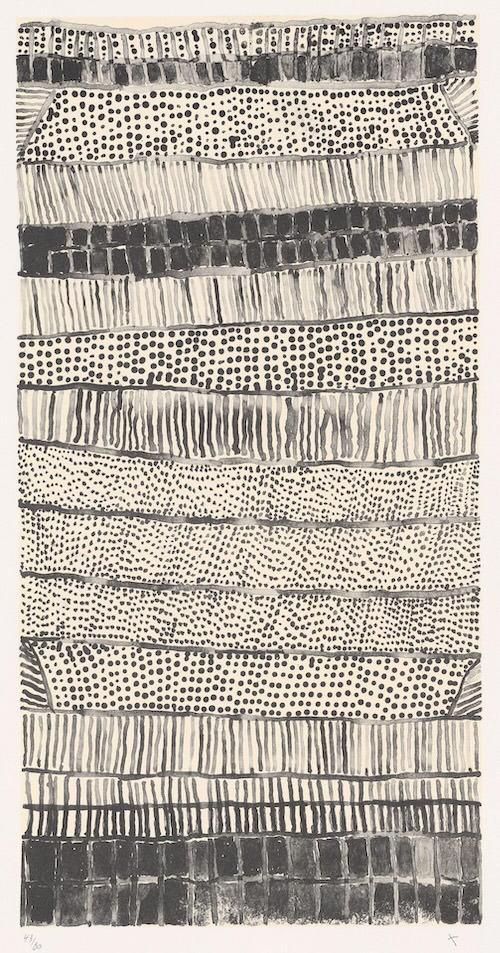
Kitty Kantilla - Jilamara #2
::
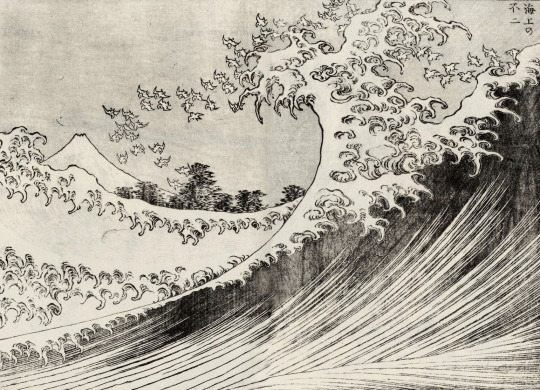
Katsushika Hokusai - The Big Wave
::

Elaine de Kooning
::
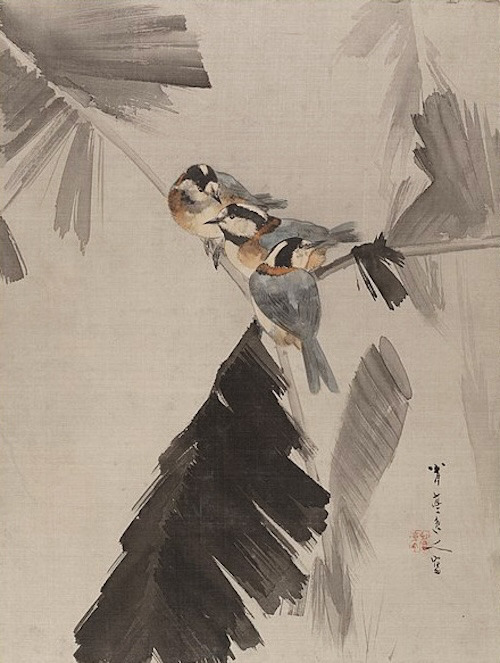
Watanabe Shōtei - Three Birds on Branch, ca. 1887
::

Louise Narbo
::

Richard Diebenkorn - Untitled
::
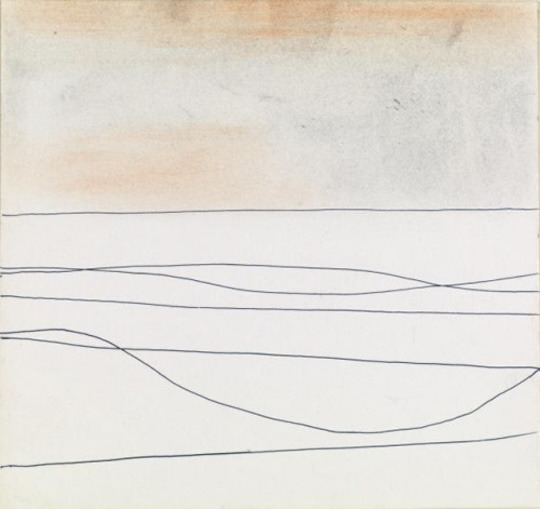
Wilhelmina Barns-Graham - Seven Lines No. 2
::

Paul Klee - In Angel’s Care, 1931
::

Nasreen Mohamed
::
Sunday: primarily color
25 notes
·
View notes
Text
The final film of the devisive Star Wars prequel trilogy was released on May 19, 2005. Of the first 6 Star Wars movies, Revenge of the Sith was the first Star Wars movie to be rated PG-13. It was also the first Star Wars film to not recieve a nomination of Best Visual Effects. The original cut of the movie tied directly to the end of the Genndy Tartakovsky animated Clone Wars (2003 - 2005) shorts and showed Shaak Ti (Orli Shoshan) being executed after failing to protect Palpatine (Ian McDiarmid). The animated shorts also introduced General Grievous (Matthew Wood) and explained why he had respratory problems. The title was simular to the original title of episode 6 Revenge of the Jedi (1983), which was turned to Return of the Jedi as Lucas felt revenge was not a Jedi trait. The title was changed late enough that it altered the title of Vengeance of Khan (1982) to Wrath of Khan as Star Trek producers felt Vengeance sounded too close to Revenge. Lucas finally worked in a Wookie planet battle that was originally in the script for episode 3 Star Wars A New Hope (1977) and reworked as Ewoks in Return of the Jedi. Originally, George Lucas planned to write and direct the first movie and then story and executive produce episodes 2 and 3, like he did with 5 and 6, but after the panning the first prequel got, he wrote and directed 2 and 3 himself. The movie had the key points of ending The Clone Wars, turning Anakin Skywalker (Hayden Christensen and James Earl Jones) into Darth Vader, the fall of the Jedi and the Republic, the creation of the Empire, the revelation of the Emperor and his disfiguration, the duel between Vader and Obi Wan (Ewan McGregor) that disfigured him, the death of Padme (Natalie Portman), the birth of Luke Skywalker (Aidan Barton) and Princess Leia Organa (also Aidan Barton), Luke's adoption by Owen (Joel Edgerton) and Beru Lars (Bonnie Piesse), Leia's adoption by Bail (Jimmy Smits) and Breha (Rebecca Jackson Mendoza) Organa, Yoda's (Frank Oz) exile to Degobah and Obi Wan to Tatooine, and C-3PO (Anthony Daniels) getting his memory wiped. The movie introduced the planets Utapau, Mygeeto, Felucia, Saleucami, Kashyyk (though technically this first appeared in the Star Wars Holiday Special - 1978), and Mustafar. Action also took place on established planets Coruscant, Naboo, and Tatooine. Noteable deaths in the movie were Count Dooku (Christopher Lee), General Grievous, Padme, Agen Kolar (Tux Akindoyeni), Saesee Tiin(Kenji Oates), Kit Fitso (Ben Cooke), Mace Windu (Samuel L Jackson), Boga, Ki-Adi-Mundi (Silas Carson), Aayla Secura (Amy Allen), Plo Koon (Matt Sloan), Stass Allie (Nina Fallon), Zett Jukassa (Jett Lucas), Whie Malreaux (Coinneach Alexander), Bene (Olivia McCallum), Cin Dralling (Nick Gillard), Nank Tun, Passel Argente (Marty Wetherill), Po Nudo (Paul Nicholson), Poggle the Lesser (Richard Stride), Rune Haako (Jerome Blake), Rute Gunnay (Colin Ware), Nute Gunray (Silas Carson), Tikkes , Cat Miin, Shu Mai, San Hill, and Wat Tambor (Ben Burtt and Matthew Wood). Characters that continued on to the original trilogy were Obi-Wan Kenobi, Darth Vader, the Emperor, Yoda, C-3PO, Tarkin (Wayne Pygram), R2-D2 (Kenny Baker), Chewbacca (Peter Mayhew), Owen and Beru Lars, Mon Mothma (Genevieve O'Reilly), Luke Skywalker, and Leia Organa. Critically, Revenge of the Sith is often called the best of the prequel trilogy and was the highest domestic grossing film in year release of 2005. ("Revenge of the Sith", Star Wars Movie Event)
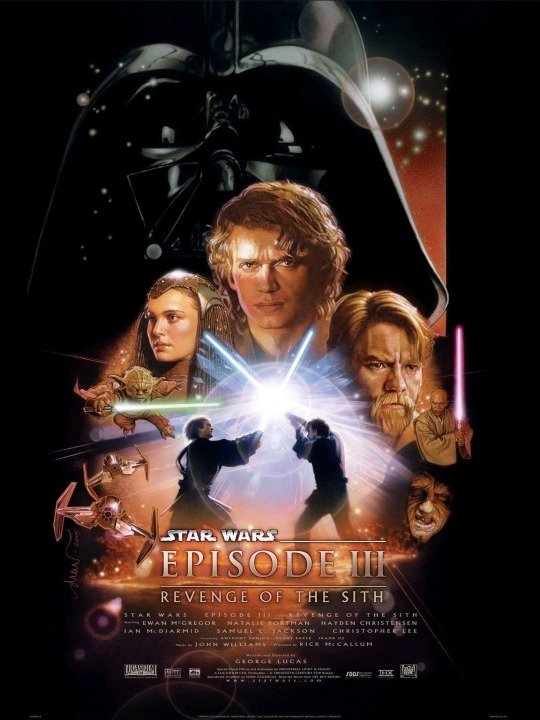
#nerds yearbook#real life event#sci fi movies#may#2005#sw#star wars#george lucas#john ostrander#jan duursema#revenge of the sith#star wars iii#hayden christensen#anakin skywalker#natalie portman#padme amidala#ewan mcgregor#obi wan kenobi#samuel l jackson#mace windu#ian mcdiarmid#palpatine#the emperor#darth sidious#jimmy smits#bail organa#frank oz#yoda#anthony daniels#c 3po
18 notes
·
View notes
Photo

Richard Prince
Untitled (De Kooning)
https://www.mutualart.com/Artwork/Untitled--De-Kooning/07DDC72DFDD894AACDB8A1C6EA572D08?utm_source=mutualart&utm_medium=email_alert&utm_campaign=alert_b&utm_content=al_by_artist
6 notes
·
View notes
Text
Is that a mandolorion? Ft characters who see a feral child and think “gimme”
Bruce Wayne from DC
Richard Grayson from DC (depends on comics but he’s very fatherly to Damian)
Tony Stark from Marvel
Plo Koon from Clone Wars
Cory Matthews from Girl Meets World (Maya is feral enough)
Marc Spector (ft Jake Lockely)
Joel from The Last of Us
Captain John Price from COD
Aizawa from fanon BNHA
Colm Fahey from Crooked Kingdom
Slenderman from Creepypasta
Ballister Boldheart from Nimona
Vander from Arcane
Honey Lemon from Big Hero 6
Clark from The 100
Wolverine from Logan
Uncle Iroh from Avatar the Last Airbender
Silco from Arcane (toxic but still)
Obi Wan from the Star Wars Saga
Leia Organa from the New Star Wars Movies
Minerva Mcgonagall from Harry Potter
Ralph from Wreck It Ralph
Kanan and Hera from Star Wars Rebels
#star wars#dc#the mandolorian#marvel#disney#the last of us#avatar the last airbender#boku no hero academia#call of duty#six of crows#arcane#harry potter
4 notes
·
View notes
Text

Willem de Kooning photographed by Richard Avedon, 1971.
2 notes
·
View notes
Photo

Willem de Kooning and Susan Brockman,1964 by Richard Avedon
12 notes
·
View notes
Text
Arte,Originalidade e Direitos Autorais > Marcelo Conrado

acima: obra de Jeff Koons (anos 1980)
Em tempos de redes sociais e inteligência artificial nada melhor que um artista, seja de qual meio for, cuidar de seus direitos. Afinal estas duas coisas são terra de ninguém quando pensamos na diferença entre uma apropriação conceitual, inserida em uma outra obra de arte e a simples reprodução de uma imagem, na maioria das vezes sem nem mesmo seu crédito, caso da IA. Portanto, mais que uma informação premente, faz-se necessário procurar entender o caminho destes processos, coisa que o livro Arte, Originalidade e Direitos Autorais (Edusp, 2023), do advogado, artista, professor e pesquisador paranaense Marcelo Conrado faz com extrema pertinência e didatismo.
O livro é dividido em duas partes, uma espécie de palíndromo: Da Arte ao Direito e Do Direito a Arte, onde o autor comenta a questão da autoria desde o Século XV até o XXI, com ênfase no Renascimento e a emancipação da arte. A importância da assinatura e da originalidade; os contratos de encomenda, inseridos no mercado editorial buscando as primeiras leis, como a primeira, moderna, dos direitos autorais na Inglaterra; bastidores do mercado editorial no Século XIX, a proteção internacional dos direitos autorais e a reivindicação de direitos na fotografia, dividindo suas afinidades em vários movimentos, como a Pop Art, Arte Conceitual, Arte Urbana, compartilhando pensadores importantes como o filósofo francês Michel Foucault ( 1926-1984), o sociólogo polonês Zygmunt Bauman ( 1925-2017) e artistas como os americanos Jeff Koons e Richard Prince ou o inglês Damien Hirst, todos polêmicos, para dizer o mínimo.
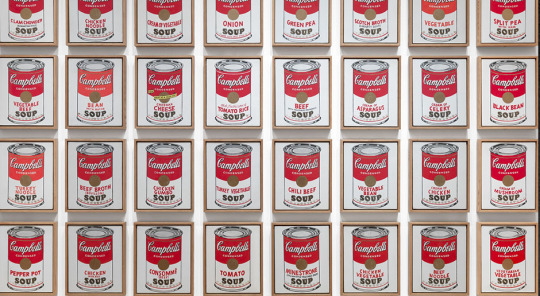
Acima: Campbells Soup de Andy Warhol
O que seria o individual e o exclusivo na Arte e no Direito, a supervalorização destes, o direito de propriedade e herança, visto que hoje ser herdeiro de um artista virou uma espécie de profissão; a má interpretação dos direitos e suas inúmeras armadilhas que envolvem questões mercadológicas, o chamado interesse público e suas relações com a cultura. Uma tarefa difícil a que se propõe Marcelo Conrado, que é doutor em direito das relações sociais pela Universidade Federal do Paraná (UFPR) e líder do Grupo de Pesquisa Clínica de Direito e Arte na mesma universidade, além de conhecido artista, com obras nos acervos de importantes museus brasileiros, como o Museu Oscar Niemeyer ( MON) e Museu da República em Brasília entre outros.

Acima obra de Robert Rauschenberg usando imagem do fotógrafo Morton Beebe
Marcelo Conrado com sua pesquisa lança luz à uma parte quase obscura do corolário brasileiro, adicionando paradigmas ao pouco que é difundido quando pensamos no editorial de acesso ao grande público. Primeiro porque abdica do juridiquês corporativo do meio, segundo que vai direto aos interesses de uma maioria face às novas ferramentas digitais que assombram a arte e terceiro porque retoma a questão histórica da construção desta sociedade deixando de lado o hieratismo, quando pensamos na produção do gênero ou linguagens tautológicas, associadas normalmente a Academia.
Poucos autores no Brasil dedicam-se ao cruzamento da questão legal, comercial e ética da arte. É certo que temos versões internacionais importantes publicadas por aqui, a discutir a relação entre produção e sociedade, principalmente a explicar a construção do mercado que hoje se manifesta. Caso, do excelente livro do historiador inglês Simon Schama com seu O desconforto da riqueza, a cultura holandesa na época do ouro ( Cia das Letras, 2009) uma análise sobre a relação político -social no crescimento de uma nação que construiu uma identidade coletiva tornando-se uma potência mundial, abordando seus sistemas éticos.
Maria José Justino, crítica de arte e curadora paranaense alerta em seu prefácio que Conrado aceitou dois desafios: analisar o interesse público na produção artística e no acesso aos bens culturais e investigar os trabalhos dos artistas na arte contemporânea, em particular no uso das citações, apropriações e ideias tomadas como "matéria-prima"que exigem modificar o arcabouço jurídico. Em sua introdução o autor propõe que "A chave do acesso à compreensão dos direitos autorais não está no direito. Ela está na arte. Não deve recair tão somente na questão jurídica." Para ele é um livro que dialoga com o conceito de autoria na arte e explica que a produção contemporânea caracteriza-se pela apropriação de objetos de uso comum, lembrando aqui do americano Andy Warhol (1928-1987) talvez o artista mais conhecido neste seguimento, ou voltando no tempo Marcel Duchamp (1887-1968) e seus "ready-mades", este último associado ao pensamento benjaminiano: a perda da aura da imagem reproduzida tecnicamente.

Acima, obra da americana Sherrie Levine, com fotos de Walker Evans
O autor explica que no Renascimento a arte não estava mais relacionada ao dom divino e sim a valorização da técnica, momento em que o autor traz para si a autoria. Nos sistemas jurídicos, então, esta autoria é pensada individualmente ou então em coautoria. Ele cita o pensador francês André Chastel (1912-1990) para quem "o artista isolado, que trabalha para si na solidão de seu estúdio, não existe." Sem dúvida pensando na evolução desta ideia no meio mais contemporâneo, o artista recolhido em seu ambiente não somente não faz sucesso, bem como a produção torna-se mais suscetível da crítica e principalmente de seus desdobramentos jurídicos. O francês também lembra que várias vezes esta obra "autenticada" conta com a participação de vários assistentes, embora seja o artista que assine a autenticidade a mesma. Caso por exemplo dos americanos Jeff Koons e Robert Rauschenberg (1925-2008).
Marcelo Conrado esclarece que o tratamento jurídico não é isonômico ao artista visual que necessita usar partes de imagens de outros artistas, salvo se a obra já estiver em domínio público. Diz ele " No entanto, se a Pop Art assim como a arte dos séculos XX e XXI, destina-se, também, à crítica social, não é plausível que o artista necessite utilizar autorização a algo que será objeto de crítica, pois o titular dos direitos terá que consentir tanto com a apropriação como o conteúdo da manifestação." Ele lembra da controvérsia entre Rauschenberg e o fotógrafo Morton Beebe no final dos anos 1970, quando o artista utilizou uma imagem deste. Voltamos aos dias de hoje quando a fotógrafa Lynn Goldsmith e Andy Warhol Foundation entraram em um debate jurídico em uma questão semelhante.
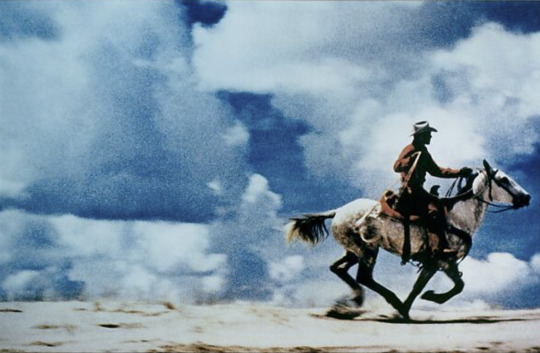
Acima imagem de Richard Prince que copia uma fotografia de publicidade
Outro item interessante abordado por Conrado é a desmaterialização do suporte na arte, que para ele esteve restrita aos suportes tradicionais até o século X!X, pinturas, desenhos, fotografias e o tridimensional das esculturas que definiam seus limites materiais. Ele levanta a questão que os direitos autorais habituaram-se a trabalhar com tais categorias. Mas com rompimentos no século XX surgiram os chamados ready-mades tornando materiais inusitados, como uma roda de bicicleta, de Duchamp, e inclusive o próprio corpo do artista, tangíveis ou intangíveis, sendo que a durabilidade que a arte e o direito valorizaram também sofreram desgastes, com muitas obras pensadas pelos autores como algo transitório ou efêmeras. "Algumas das obras existem mas, intencionalmente, não podem ser vistas pelo público. Em alguns casos o processo é privilegiado ao resultado." diz o autor do livro, que cita várias situações análogas.
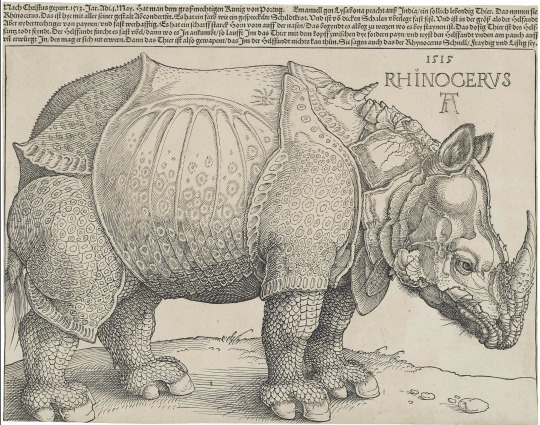
Acima: Xilografia do Rinoceronte, do alemão Albrecht Dürer (1471-1528)
A conhecida xilogravura de um rinoceronte, do artista alemão Albrecht Dürer ( 1471-1528) é um dos exemplos quando Marcelo Conrado escreve sobre que muitos artistas não tiveram contato com o que é representado em sua obra. Teria o artista então criado a peça, a partir de um esboço e uma descrição enviados da Espanha. O que seria diferente, por exemplo, dos artistas que representavam cenas bíblicas, que certamente foram imaginadas. A diferença é que todos nós conhecemos um rinoceronte, e estamos aptos a dizer o quão o artista aproximou-se realmente do animal. Diz ele: "A ilustração de Dürer é um convite a analisar uma das questões ainda pouco exploradas nos direitos autorais: como os artistas criam suas obras? Entramos, então, na discussão sobre a influência e originalidade no processo criativo, pois para afirmar o que é plágio é preciso analisar também quais são os limites da influência e da originalidade."
Um livro que leva a procurar outros livros é um dos ganhos da publicação de Marcelo Conrado. Ao seguir as indicações no seu texto ou pelas extensas notas bibliográficas, o leitor certamente expande sua busca despertada pelas suas narrativas. Por exemplo, o interessante livro Pós Produção, como a arte reprograma o mundo contemporâneo (Ed.Martins Fontes, 2009), do curador e crítico de arte francês Nicolas Bourriaud. O desafio do artista do nosso século é reescrever a modernidade. A análise do processo que a arte contemporânea está inserida. Para o pensador " Não se necessita mais partir novamente do zero, nem se sentir sobrecarregado pelo acúmulo da História, mas inventariar e selecionar, utilizar e recarregar." Em outras palavras, o artista serve-se de apropriações.
Outro personagem interessante, entre os inúmeros levantados pelo autor é a americana Sherrie Levine, também relacionada a apropriação de imagens, no que diz respeito quando a ideia da originalidade é subvertida e que inclusive questiona o direito autoral. " Sherrie Levine desde a década de 1980 dedica-se à cópia, tendo um interesse bem definido nas obras de cópia. Ela reproduz trabalhos de artistas do gênero masculino, promovendo uma alusão direta ao patriarcado, reportando ao discurso de autoridade." Uma das obras que ela trabalhou é mictório, ready-made de Marcel Duchamp, chamado A Fonte, criando metadados sobre metadados. Mais interessante ainda são as apropriações que ela fez do grande fotógrafo americano Walker Evans (1903-1975) , que são simplesmente a reprodução direta da imagem. Marcelo Conrado dedica muitas páginas a esclarecer estes processos, entre outros artistas contemporâneos. Por certo o leitor conseguirá entender o que é a chamada “Arte Conceitual” em sua derradeira permanência.

Obra do artista Cildo Meirelles
Escrevendo sobre a questão da reprodução publicitária de grafites nas ruas e pendengas jurídicas, Conrado menciona no livro o popular grafiteiro Eduardo Kobra, recortando uma declaração do mesmo sobre direito autoral: "o mínimo esperado é que a empresa entre em contato com o artista, pelo menos por uma questão de respeito. Mas é muito difícil alguém ter esta consciência." ( a partir de texto de Paulo Toledo Piza,”artistas de São Paulo, cobram cachê por foto publicitária com Grafite em Beco." publicado no portal G1 em 26 de abril de 2012.) Entretanto, vemos diversos trabalhos deste grafiteiro, como o retrato de Oscar Niemeyer (1907-2012) em uma empena de um prédio da Avenida Paulista, a partir de fotografia da carioca Nana Moraes, importante autora brasileira, a qual o mesmo não pediu permissão para reproduzir, ou o retrato do poeta maranhense Ferreira Gullar (1930-2016) (citado no livro em outra questão), em São Luiz, Maranhão de autoria do fotógrafo Eduardo Simões, da mesma maneira. Ou seja, o velho ditado "Faça o que eu digo mas não faça o que eu faço. Caso também do americano Jeff Koons queixando-se da cópia do seu Balloon Dog, Red, de 1994, mas sendo condenado por um tribunal de apelações de Paris por violação de direitos autorais. A escultura Fait d'hiver de Koons, de 1988, copia uma foto para a campanha publicitária de um fabricante de roupas francês. O que representa a importância de uma literatura deste tipo com fácil acesso.
"Arte, originalidade e Direitos Autorais", de Marcelo Conrado, é uma grande aula sobre os movimentos da arte e suas particularidades. A junção do autor como um artista consagrado e um advogado e professor idem, supera as publicações normais do meio ao associar critérios mais contemporâneos que discutem a propostas de diferentes artistas importantes do Brasil e do exterior, um compartilhamento de conhecimento, para além da classe de aula, dando acesso a um público bem maior, algo que a cultura brasileira anda precisando há tempos.
Imagens © dos autores. Texto © Juan Esteves
* As imagens aqui publicadas não estão no livro, são representações de artistas mencionados no livro, escolhidas pelo blog.
Infos básicas:
Autor: Marcelo Conrado
Editora Edusp
Produção editorial: Marilena Vizentin
Projeto gráfico: Negrito Produção Editorial
Design da capa: Carolina Sucheuski
Impressão e acabamento: Gráfica CS
Para Adquirir o livro: https://www.edusp.com.br/loja/produto/1610/arte,-originalidade-e-direitos-autorais
3 notes
·
View notes